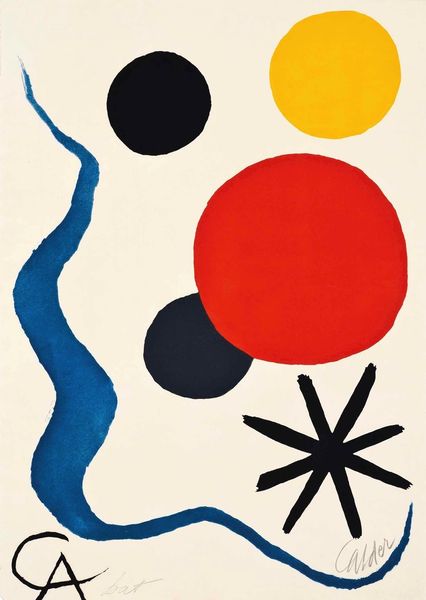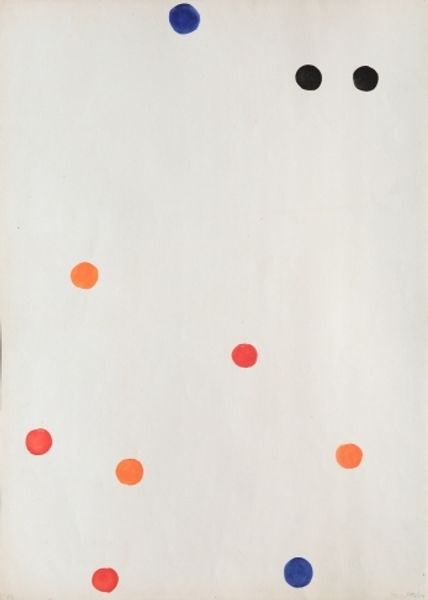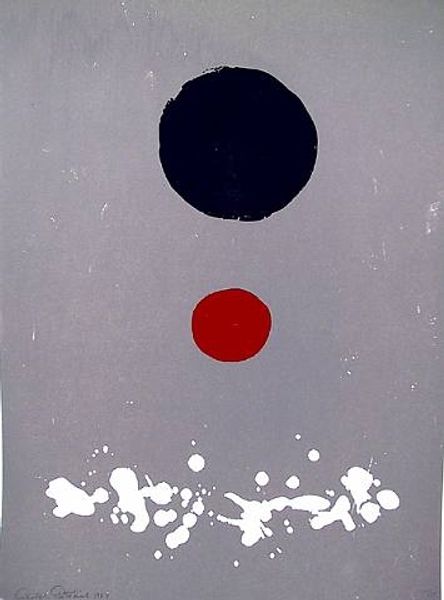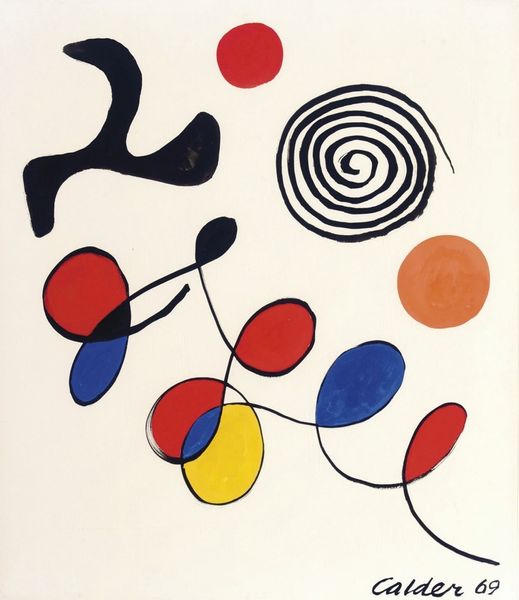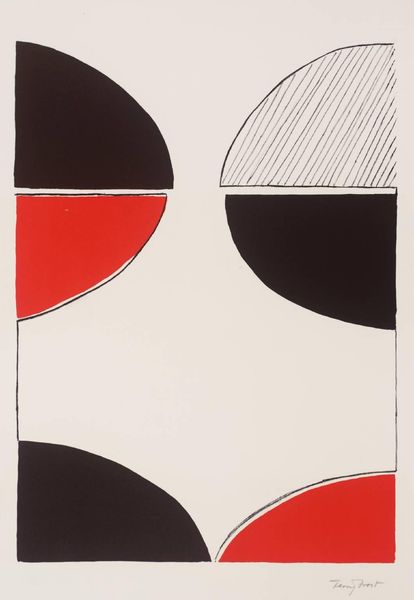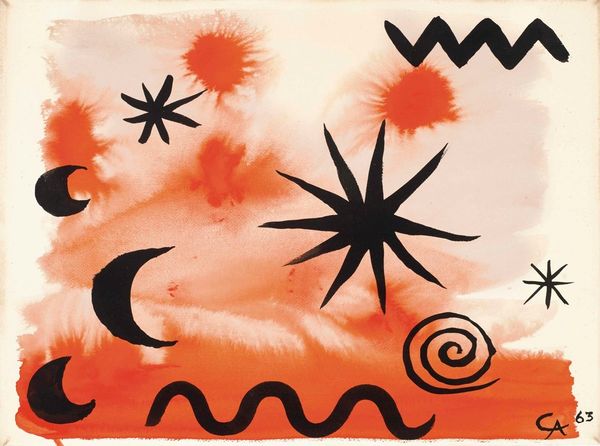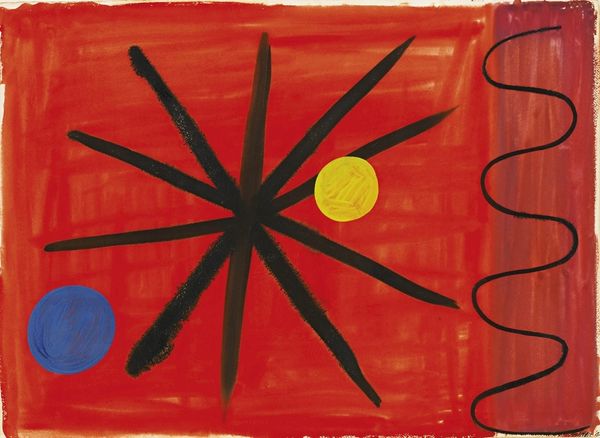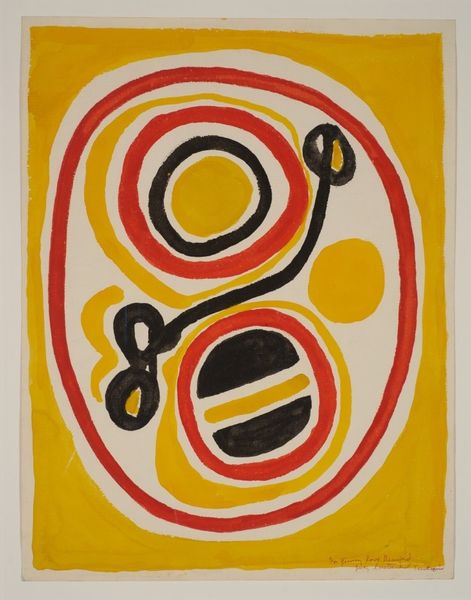
painting, acrylic-paint
#
painting
#
typography
#
pop art
#
colour-field-painting
#
acrylic-paint
#
abstract
#
form
#
geometric
#
abstraction
#
pop-art
#
line
#
modernism
Copyright: Modern Artists: Artvee
Editor: This is Alexander Calder’s "Red Sun, Red Water" from 1969, done in acrylic paint. There’s something almost playful about the simple shapes and bold colors. What strikes you most about it? Curator: Well, the very *making* of this work, its reliance on acrylic—a material then seen as industrial, not "artistic"—is crucial. Calder's using it questions those rigid hierarchies. This challenges the preciousness often associated with painting. Editor: So, the choice of materials is itself a statement? Curator: Absolutely. Think about the social context too. It's 1969. There is so much happening. Calder bypasses traditional artmaking, choosing accessibility and speed of execution afforded by acrylic. Is he commenting on the mass production and disposability increasingly characterizing the world? How might its resemblance to printed materials factor into its perception of art or craft? Editor: That’s interesting, I hadn’t thought of it like that. The piece seems simple, but it's also part of the pop-art movement that challenged distinctions... Curator: Precisely. The forms, manufactured colors, clean lines... everything screams production. And by literally dating and signing it on the lower right-hand side like a promotional poster, what sort of a comment is he making about originality? What does it tell us that someone trained as a mechanical engineer then moves into a commercial marketplace of art making and sculpture? Editor: It’s really interesting to think about how Calder’s artistic practice reflects those wider societal shifts. It feels very accessible, but also surprisingly thoughtful when you consider the context. Curator: Indeed. By analyzing the materials and the processes surrounding their usage, the work transforms into an interesting commentary about art making itself. It makes one wonder about the materials, means, and modes of production and if they might shape and reflect art's inherent value in some way.
Comments
No comments
Be the first to comment and join the conversation on the ultimate creative platform.
